Jarne Van Mulders
RF-Powered Batteryless Plant Movement Sensor for Precision Agriculture
Sep 16, 2025Abstract:Precision agriculture demands non-invasive, energy-efficient, and sustainable plant monitoring solutions. In this work, we present the design and implementation of a lightweight, batteryless plant movement sensor powered solely by RF energy. This sensor targets Controlled Environment Agriculture (CEA) and utilizes inertial measurements units (IMUs) to monitor leaf motion, which correlates with plant physiological responses to environmental stress. By eliminating the battery, we reduce the ecological footprint, weight, and maintenance requirements, transitioning from lifetime-based to operation-based energy storage. Our design minimizes circuit complexity while enabling flexible, adaptive readout scheduling based on energy availability and sensor data. We detail the energy requirements, RF power transfer considerations, integration constraints, and outline future directions, including multi-antenna power delivery and networked sensor synchronization.
GNN-based Precoder Design and Fine-tuning for Cell-free Massive MIMO with Real-world CSI
May 13, 2025Abstract:Cell-free massive MIMO (CF-mMIMO) has emerged as a promising paradigm for delivering uniformly high-quality coverage in future wireless networks. To address the inherent challenges of precoding in such distributed systems, recent studies have explored the use of graph neural network (GNN)-based methods, using their powerful representation capabilities. However, these approaches have predominantly been trained and validated on synthetic datasets, leaving their generalizability to real-world propagation environments largely unverified. In this work, we initially pre-train the GNN using simulated channel state information (CSI) data, which incorporates standard propagation models and small-scale Rayleigh fading. Subsequently, we finetune the model on real-world CSI measurements collected from a physical testbed equipped with distributed access points (APs). To balance the retention of pre-trained features with adaptation to real-world conditions, we adopt a layer-freezing strategy during fine-tuning, wherein several GNN layers are frozen and only the later layers remain trainable. Numerical results demonstrate that the fine-tuned GNN significantly outperforms the pre-trained model, achieving an approximate 8.2 bits per channel use gain at 20 dB signal-to-noise ratio (SNR), corresponding to a 15.7 % improvement. These findings highlight the critical role of transfer learning and underscore the potential of GNN-based precoding techniques to effectively generalize from synthetic to real-world wireless environments.
Experimental Study on the Effect of Synchronization Accuracy for Near-Field RF Wireless Power Transfer in Multi-Antenna Systems
Dec 15, 2024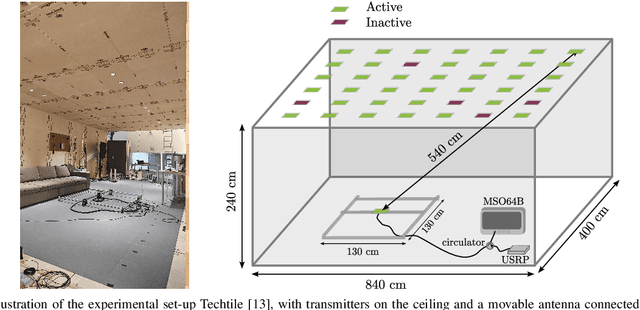
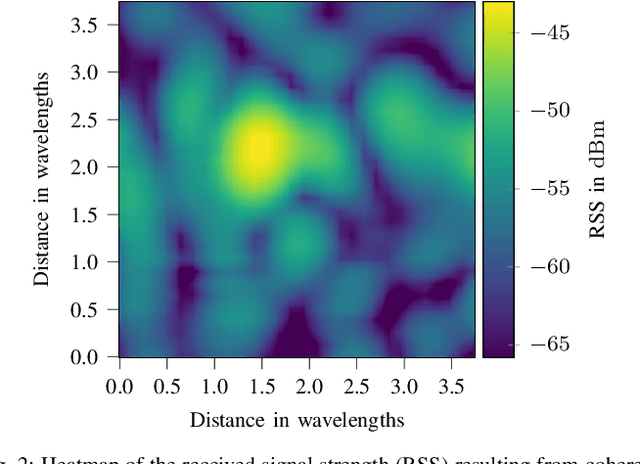
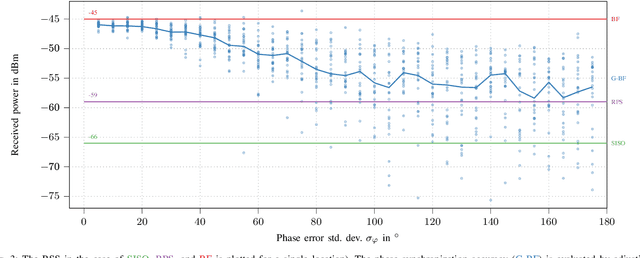

Abstract:Wireless power transfer (WPT) technologies hold promise for enhancing device autonomy, particularly for energy-limited IoT systems. This paper presents experimental results on coherent and non-coherent transmit diversity approaches for WPT, tested in the near field using the Techtile testbed. We demonstrate that a fully synchronized beamfocusing system achieves a 14 dB gain over non-coherent transmission, consistent with the theoretical 14.9 dB gain for a 31-element array. Additionally, phase alignment errors below 20{\deg} result in less than 1 dB of gain loss, while errors exceeding 40{\deg} lead to losses over 3 dB. These findings suggest that phase coherency requirements for WPT can be relaxed, and that scaling the number of antennas is a promising strategy for improving power transfer efficiency.
How to Perform Distributed Precoding to Wirelessly Power Shelf Labels: Signal Processing and Measurements
Aug 20, 2024Abstract:Wireless power transfer (WPT) has garnered increasing attention due to its potential to eliminate device-side batteries. With the advent of (distributed) multiple-input multiple-output (MIMO), radio frequency (RF) WPT has become feasible over extended distances. This study focuses on optimizing the energy delivery to Energy Receivers (ERs) while minimizing system total transmit power. Rather than continuous power delivery, we optimize the precoding weights within specified time slots to meet the energy requirements of the ERs. Both unsynchronized (non-coherent) and synchronized (coherent) systems are evaluated. Our analysis indicates that augmenting the number of antennas and transitioning from an unsynchronized to asynchronized full phase-coherent system substantially enhances system performance. This optimization ensures precise energy delivery, reducing overshoots and overall energy consumption. Experimental validation was conducted using a testbed with84 antennas, validating the trends observed in our numerical simulations.
Techtile -- Open 6G R&D Testbed for Communication, Positioning, Sensing, WPT and Federated Learning
Feb 09, 2022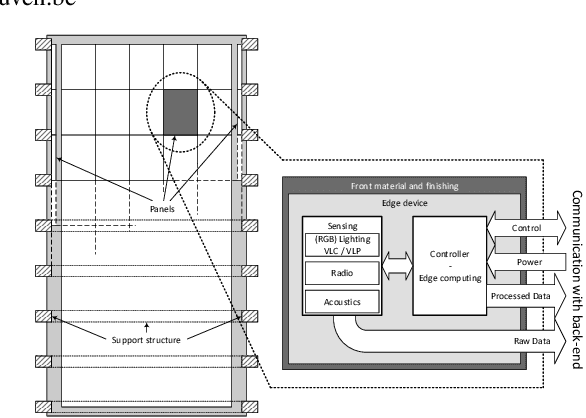
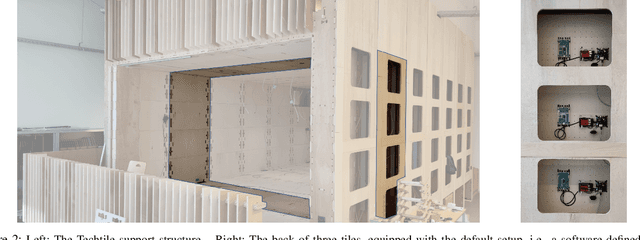
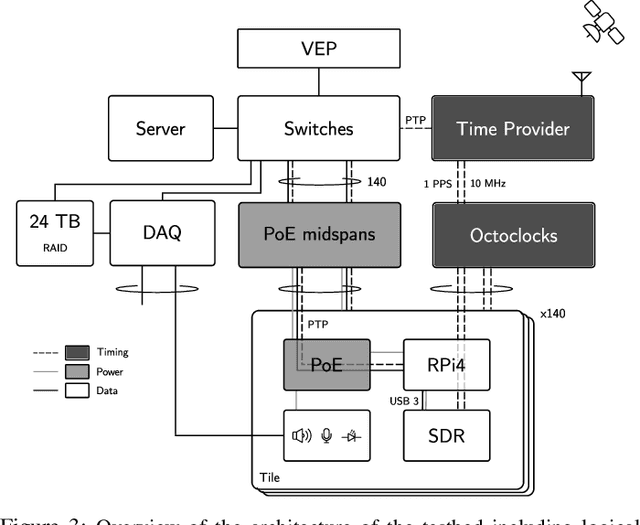
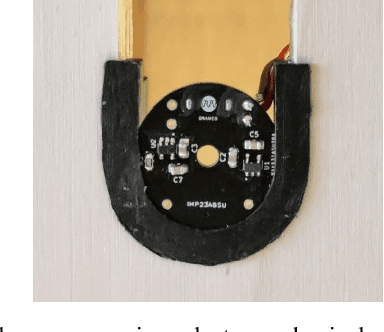
Abstract:New concepts for next-generation wireless systems are being developed. It is expected that these 6G and beyond systems will incorporate more than only communication, but also sensing, positioning, (deep) edge computing, and other services. The discussed measurement facility and approach, named Techtile, is an open, both in design and operation, and unique testbed to evaluate these newly envisioned systems. Techtile is a multi-functional and versatile testbed, providing fine-grained distributed resources for new communication, positioning and sensing technologies. The facility enables experimental research on hyper-connected interactive environments and validation of new algorithms and topologies. The backbone connects 140~resource units equipped with edge computing devices, software-defined radios, sensors, and LED sources. By doing so, different network topologies and local-versus-central computing can be assessed. The introduced diversity of i) the technologies (e.g., RF, acoustics and light), ii) the distributed resources and iii) the interconnectivity allows exploring more degrees and new types of diversity, which can be investigated in this testbed.
A Primer on Techtile: An R&D Testbed for Distributed Communication, Sensing and Positioning
May 14, 2021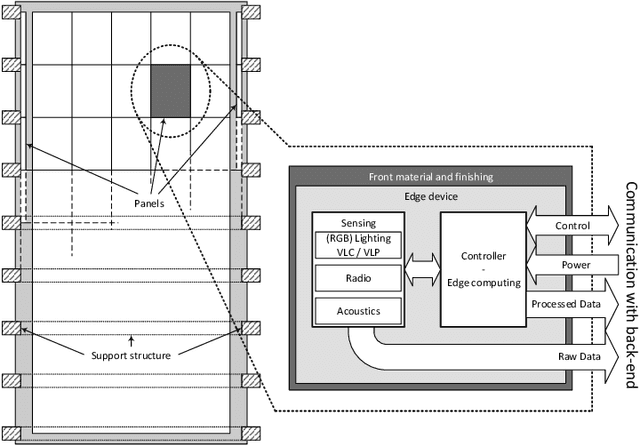
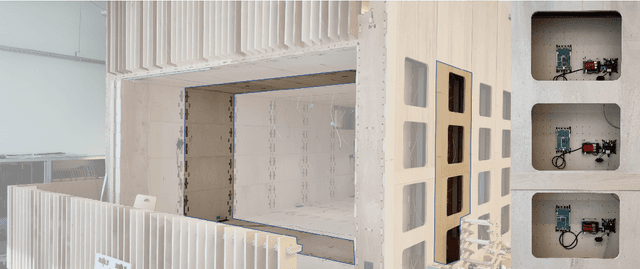
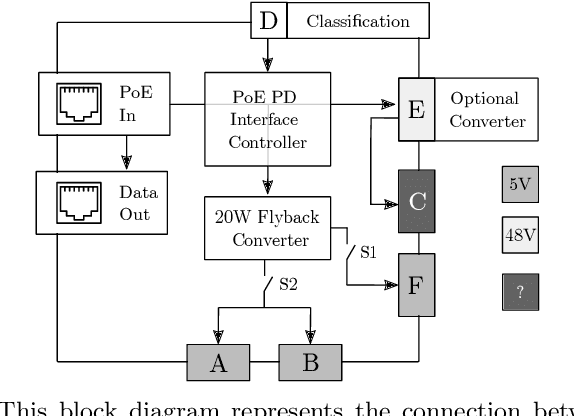
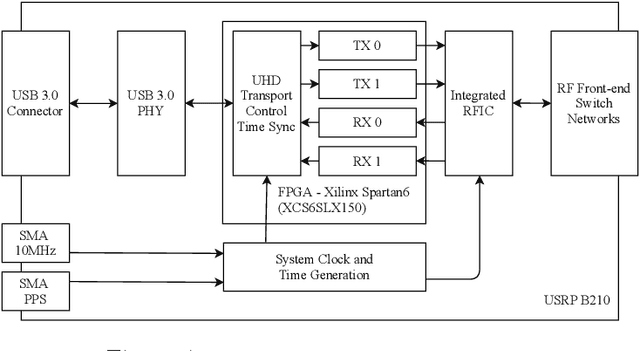
Abstract:The Techtile measurement infrastructure is a multi-functional, versatile testbed for new communication and sensing technologies relying on fine-grained distributed resources. The facility enables experimental research on hyper-connected interactive environments and validation of new wireless connectivity, sensing and positioning solutions. It consists of a data acquisition and processing equipment backbone and a fabric of dispersed edge computing devices, Software-Defined Radios, sensors, and LED sources. These bring intelligence close to the applications and can also collectively function as a massive, distributed resource. Furthermore, the infrastructure allows exploring more degrees and new types of diversity, i.e., scaling up the number of elements, introducing `3D directional diversity' by deploying the distributed elements with different orientations, and `interface diversity' by exploiting multiple technologies and hybrid signals (RF, acoustic, and visible light).
 Add to Chrome
Add to Chrome Add to Firefox
Add to Firefox Add to Edge
Add to Edge